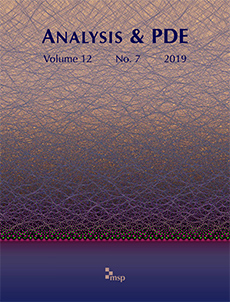Abstract
We consider the determination of a conductivity function in a two-dimensional domain from the Cauchy data of the solutions of the conductivity equation on the boundary. We prove uniqueness results for this inverse problem, posed by Calderón, for conductivities that are degenerate, that is, they may not be bounded from above or below. Elliptic equations with such coefficient functions are essential for physical models used in transformation optics and the study of metamaterials, e.g., the zero permittivity materials. In particular, we show that the elliptic inverse problems can be solved in a class of conductivities which is larger than . Also, we give new counterexamples for the uniqueness of the inverse conductivity problem.
We say that a conductivity is visible if the inverse problem is solvable so that the conductivity inside of the domain can be uniquely determined, up to a change of coordinates, using the boundary measurements. The original counterexamples for the inverse problem are related to the invisibility cloaking. This means that there are conductivities for which a part of the domain is shielded from detection via boundary measurements and even the existence of the shielded domain is hidden. Such conductivities are called invisibility cloaks.
In the present paper, we identify the borderline of the visible conductivities and the borderline of invisibility cloaking conductivities. Surprisingly, these borderlines are not the same. We show that between the visible and the cloaking conductivities, there are the electric holograms. These are conductivities which create an illusion of a nonexisting body. Such conductivities give counterexamples for the uniqueness of the inverse problem which are less degenerate than the previously known ones. These examples are constructed using transformation optics and the inverse maps of the optimal blow-up maps. The proofs of the uniqueness results for inverse problems are based on the complex geometrical optics and the Orlicz space techniques.
Citation
Kari Astala. Matti Lassas. Lassi Päivärinta. "The borderlines of invisibility and visibility in Calderón's inverse problem." Anal. PDE 9 (1) 43 - 98, 2016. https://doi.org/10.2140/apde.2016.9.43
Information





